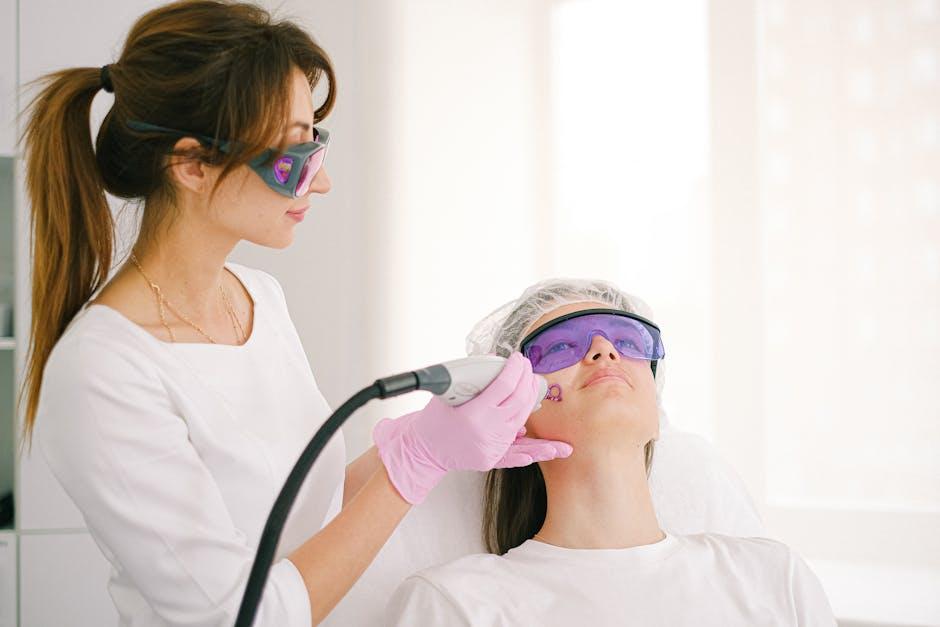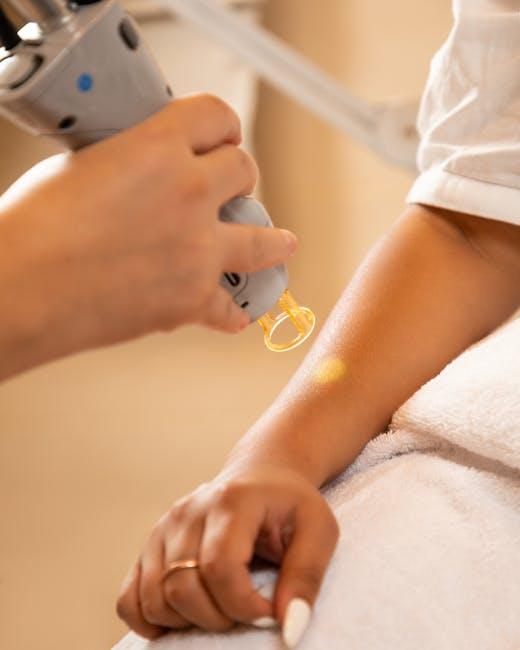The Debate Over Laser Treatments for Skin Issues
In the realm of skincare, where science meets the artistry of self-care, few topics ignite as much discussion as the use of laser treatments. These beams of light, once relegated to the realms of science fiction, have carved out a niche in dermatology, promising to rejuvenate, refine, and redefine our skin. Yet, as with any technological advancement, the path is not without its critics and champions, each armed with studies, statistics, and stories. From the hopeful glow of erasing sun damage to the shadows of side effects, the debate over laser treatments for skin issues is as multifaceted as the skin itself. In this exploration, we delve into the heart of the discourse, illuminating the promises and pitfalls of laser technology in the quest for flawless skin.
Understanding the Science Behind Laser Technology
Laser technology, a marvel of modern science, operates on the principle of light amplification by stimulated emission of radiation. This intricate process involves the excitation of atoms or molecules, which then emit photons in a coherent beam of light. This beam’s precision and intensity allow it to interact with the skin in ways that traditional methods cannot. By selectively targeting specific tissues, lasers can minimize damage to surrounding areas, making them an attractive option for treating a variety of skin issues.
- Types of Lasers: Various types of lasers, such as CO2, Erbium, and Nd:YAG, are employed based on the specific skin condition being treated. Each has its own wavelength and penetration depth, offering tailored solutions.
- Mechanism of Action: Lasers work by delivering concentrated energy to the skin, which can vaporize tissue, stimulate collagen production, or break down pigments, depending on the wavelength used.
- Safety and Precision: The ability to control the laser’s intensity and focus ensures that treatments are both effective and safe, reducing the risk of side effects.
While the efficacy of laser treatments is well-documented, the debate often centers around the accessibility and cost of these procedures. Understanding the science behind how lasers interact with the skin can demystify these treatments and empower individuals to make informed decisions. As research continues to evolve, so too will the applications of laser technology in dermatology, offering new possibilities for those seeking solutions to skin issues.
Evaluating the Effectiveness of Laser Treatments for Various Skin Conditions
In recent years, laser treatments have emerged as a promising solution for a range of skin conditions, from acne scars to pigmentation issues. However, the effectiveness of these treatments varies significantly depending on the specific condition and individual skin type. Some dermatologists and skincare professionals highlight the benefits, noting how lasers can stimulate collagen production, reduce redness, and even out skin tone. Yet, others caution against viewing them as a one-size-fits-all solution.
- Acne Scars: Lasers can effectively reduce the appearance of scars by promoting new skin growth, though multiple sessions may be necessary.
- Hyperpigmentation: While certain lasers target melanin and can lighten dark spots, they may not be suitable for all skin tones.
- Rosacea: Vascular lasers are often used to diminish redness, but the results can vary and might not be permanent.
- Wrinkles: Laser resurfacing can smooth fine lines, but the recovery time and risk of side effects should be considered.
Ultimately, the success of laser treatments depends on a combination of factors, including the skill of the practitioner, the type of laser used, and the patient’s unique skin characteristics. Therefore, a thorough consultation with a qualified professional is crucial before proceeding with any laser treatment.

Navigating the Risks and Benefits: What Patients Should Know
When considering laser treatments for skin issues, patients must weigh both potential rewards and risks. On one hand, laser treatments offer promising benefits such as reduced appearance of scars, even skin tone, and minimized fine lines. They can also target specific areas, providing a tailored approach to skin care. However, the allure of a flawless complexion must be balanced with the understanding of possible side effects. These can include:
- Temporary redness or swelling
- Changes in skin pigmentation
- Risk of scarring
- Infection
It is essential for patients to consult with a qualified dermatologist who can assess their individual skin type and medical history. By doing so, they can better understand the safety protocols and expected outcomes specific to their treatment plan. This informed approach helps in navigating the landscape of laser treatments, ensuring that the journey towards improved skin health is both effective and safe.

Expert Recommendations: Choosing the Right Laser Treatment for Your Skin
When selecting the perfect laser treatment for your skin, it’s essential to consider several key factors that can make a significant difference in your results. Skin type and tone play a crucial role, as certain lasers are more effective and safer for specific skin tones. Consulting with a certified dermatologist or a laser specialist can provide insights into the most suitable options tailored to your individual needs.
Consider the following expert recommendations to guide your decision:
- Identify Your Skin Concerns: Different lasers target different issues, such as acne scars, pigmentation, or fine lines. Understanding your primary concern can help narrow down your choices.
- Evaluate Recovery Time: Some treatments require minimal downtime, while others might necessitate a more extended recovery period. Balance your lifestyle and commitments with the treatment’s demands.
- Research Technology: Stay informed about the latest laser technologies and their benefits. Newer systems often offer improved results with reduced side effects.
- Check Practitioner Credentials: Ensure that your chosen professional has the proper qualifications and experience with the specific laser treatment you’re considering.
By aligning these factors with your personal goals, you can make a well-informed decision that enhances both your skin’s appearance and health.
In Summary
As we conclude our exploration into the multifaceted world of laser treatments for skin issues, it becomes clear that this vibrant debate is far from reaching its denouement. The allure of laser technology, with its promise of precision and efficacy, continues to captivate both patients and practitioners. Yet, amidst the excitement, cautionary voices remind us of the importance of thorough research and individualized care. As technology advances and new findings emerge, the landscape of dermatological treatments will undoubtedly evolve, inviting us to remain curious and informed. Whether one views lasers as a beacon of hope or a tool to be wielded with care, the conversation surrounding their use in skin treatment is a testament to our ongoing quest for better health and beauty solutions. Let us, therefore, stay engaged, question assumptions, and celebrate the strides made in our understanding of both skin science and the technology that seeks to enhance it.

